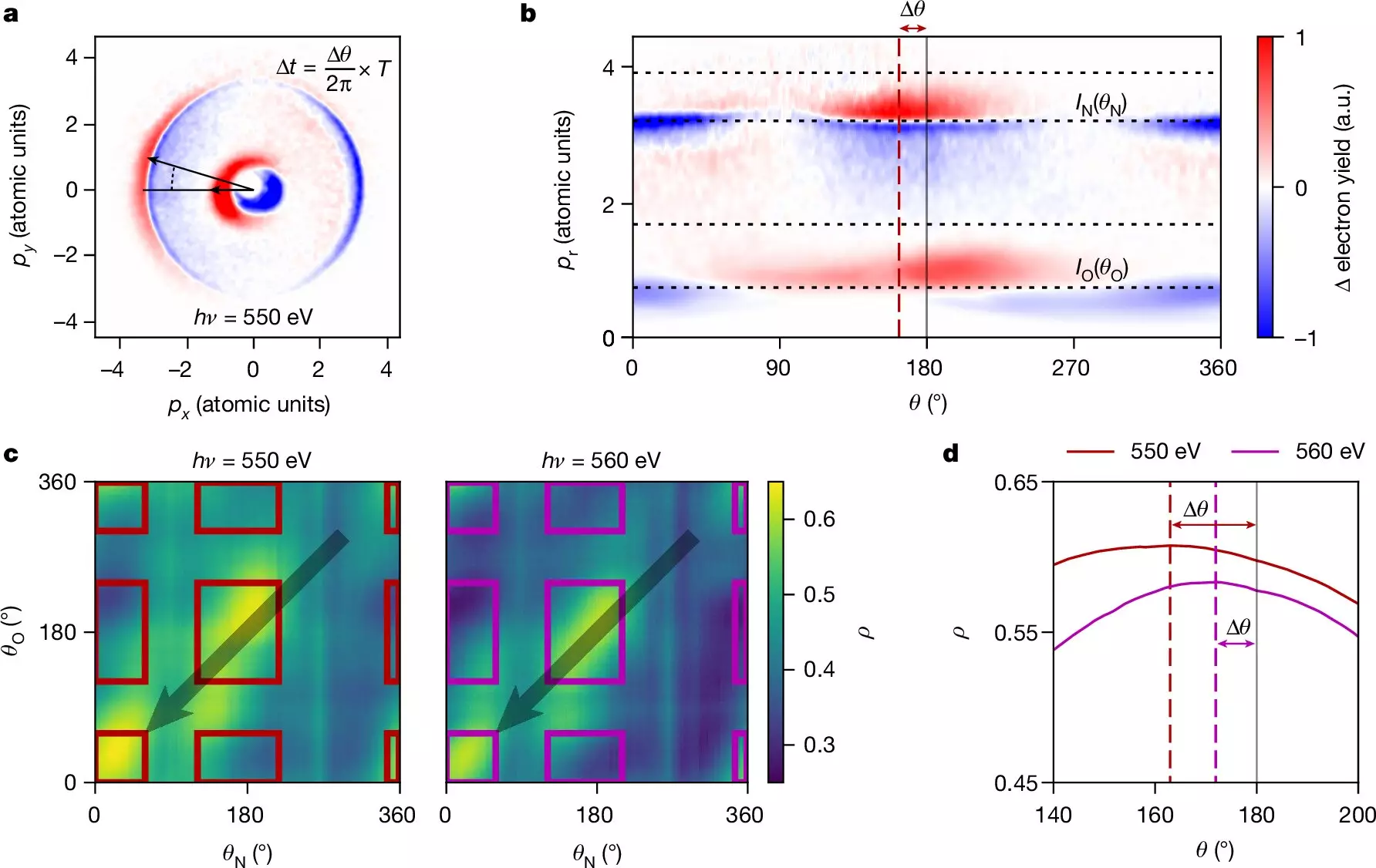In a recent study conducted by scientists from the Department of Energy’s SLAC National Accelerator Laboratory, groundbreaking information about the photoelectric effect, a phenomenon initially proposed by Einstein, has come to light. This research not only sheds new light on electron-electron interactions but also provides a valuable tool for the advancement of various technologies such as semiconductors and solar cells. The study, published in Nature on August 21, marks a significant step in the understanding of the underlying dynamics of the photoelectric effect.
Lead author and SLAC scientist Taran Driver emphasized the importance of their work by stating, “Einstein won the Nobel Prize for describing the photoelectric effect, but a hundred years later, we’ve only just begun to truly understand the underlying dynamics.” The team employed an attosecond X-ray pulse from SLAC’s Linac Coherent Light Source (LCLS) to ionize core-level electrons, ejecting them from the molecules under study. Subsequently, a separate laser pulse was used to measure the “photoemission delay,” which signifies the time lapse between photon absorption and electron emission.
The study revealed that the photoemission delays, extending up to 700 attoseconds, were considerably larger than previously predicted. This finding not only challenges existing theoretical models but also highlights the significant role of electron interactions in these time delays. Co-author and SLAC scientist James Cryan highlighted the importance of these measurements by stating, “The ability to measure and interpret these delays helps scientists better analyze experimental results, particularly in fields like protein crystallography and medical imaging.”
This study serves as the foundation for a series of planned experiments aimed at exploring electron dynamics in various molecular systems. Other research groups have already begun utilizing the developed technique to delve into larger and more complex molecules, unveiling new insights into electron behavior and molecular structure. Co-author Agostino Marinelli emphasized the potential of the LCLS in this evolving field by stating, “The flexibility of LCLS allows us to probe a wide range of energies and molecular systems, making it a powerful tool for making these types of measurements.”
The research conducted by the team of scientists at SLAC National Accelerator Laboratory represents a major breakthrough in the study of electron dynamics and the photoelectric effect. By pushing the boundaries of attosecond science and utilizing advanced tools such as the LCLS, they have paved the way for a deeper understanding of fundamental processes that underlie various technological applications. This study not only challenges existing theoretical models but also opens up new avenues for future research in the field of electron behavior and molecular interactions.


Leave a Reply